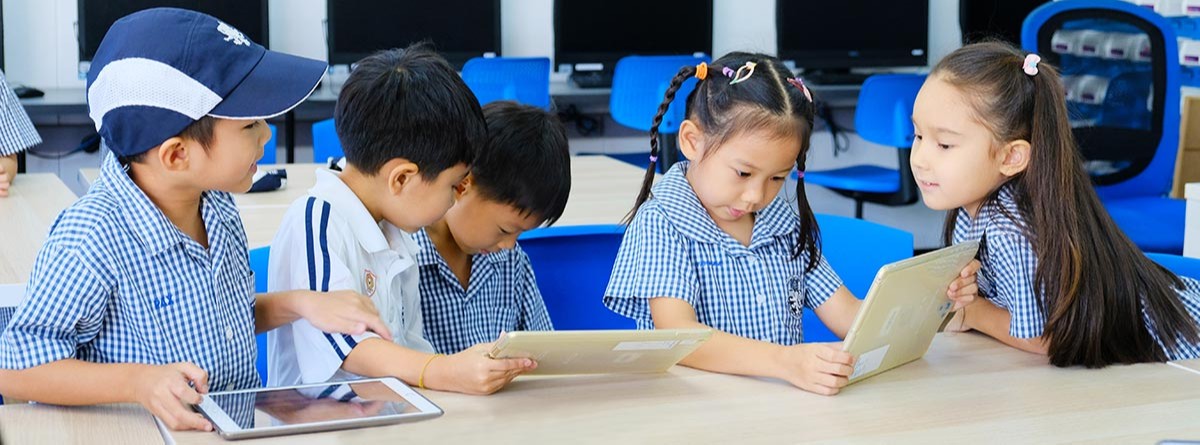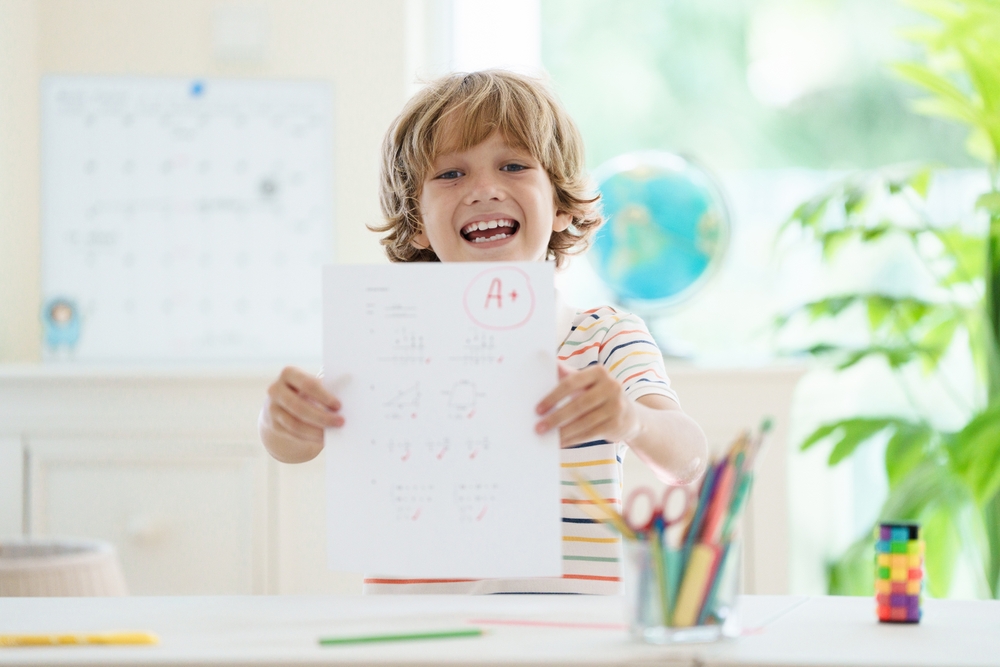Our Journey
Historically at Harrow Bangkok, Computing, as a subject, has been taught discretely across Lower School with students aged four to ten years old attending a one-hour lesson each week. Curriculum content covered a mixture of Computer Science, Digital Literacy and Information Technology, as defined in the 2014 National Curriculum and accompanying ‘Computing at School’ NAACE guide. Although the discrete model appeared to work well, I had an underlying concern that pupils might not always be applying their skills across the wider curriculum. Feedback from teachers reflected this and the situation was further exacerbated by the deskilling of staff who sometimes struggled to keep up with new technologies due to Computing being taught in a bubble.
In 2021, I was granted the opportunity to embark upon a journey of greater technology integration. At the time, we were rewriting the entire lower school curriculum, and the AISL Digital Literacy curriculum was also being developed, so it was a prime opportunity for such a project. We decided to keep teaching the pre-coding, computational thinking and programming strands discretely but to link curriculum objectives, where possible, to each year group’s units of study. For example, one of Year 2’s topics was ‘Food for Thought’, which leant itself well to recipes, instructions and algorithms whilst over in Year 4, their enquiry question was ‘How can we be Responsible Consumers?’ which linked nicely to building a sustainable house within ‘CoSpaces’ and coding a quiz about its features.
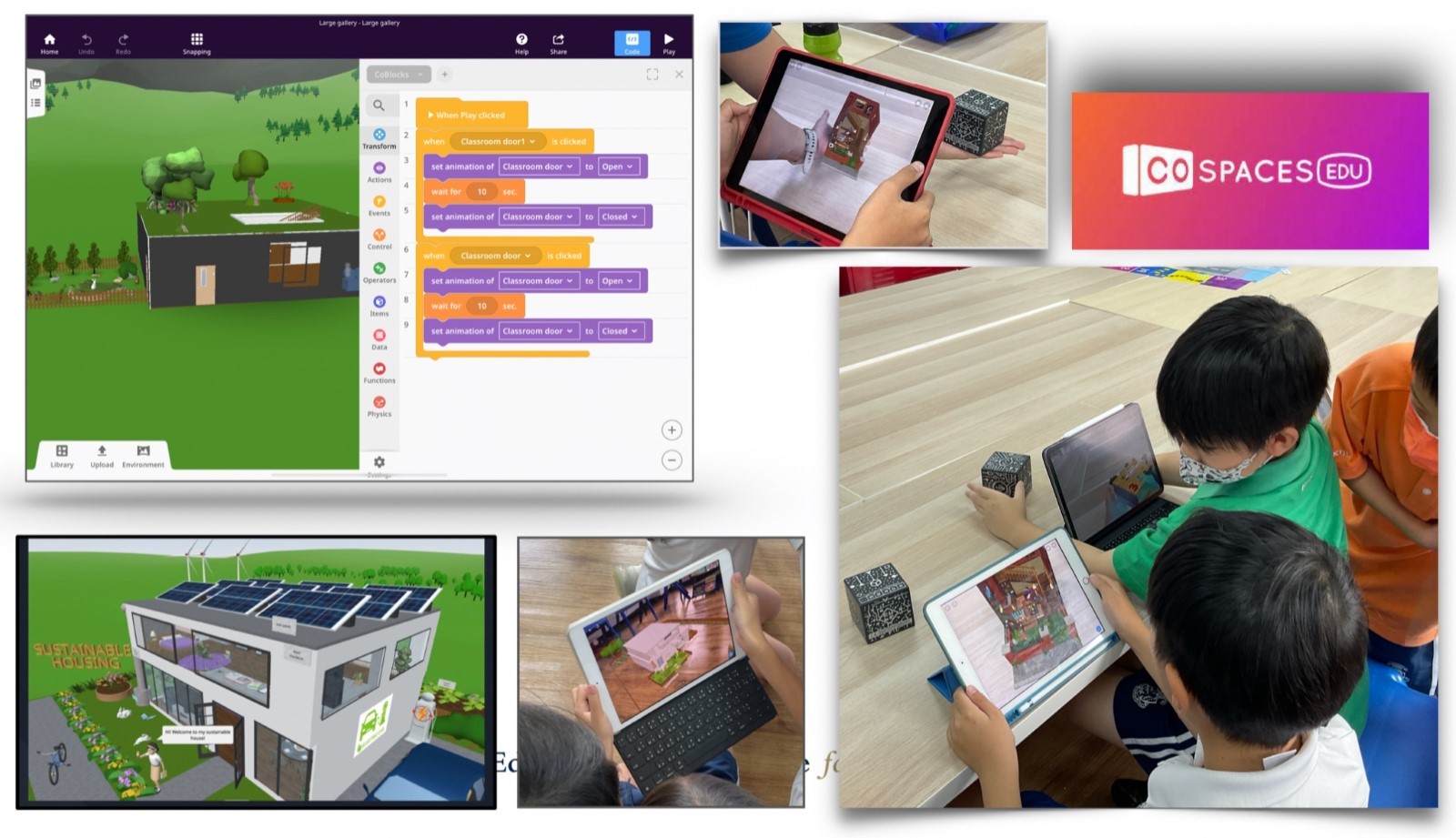
Using CoSpaces to build and code sustainable environments
The remaining strands of the AISL digital literacy curriculum, such as developing digital innovation, data and multimedia became fully embedded across the curriculum and taught in context by the form-room teachers. For example, in Year 4, students researched the parts of the digestive system and then built their own AR models in the app ‘JigSpace’ while pupils in Year 3 made animated Scream pictures, based on the work of Edvard Munch, using the apps ‘Sketches School’ and ‘Motionleap’.
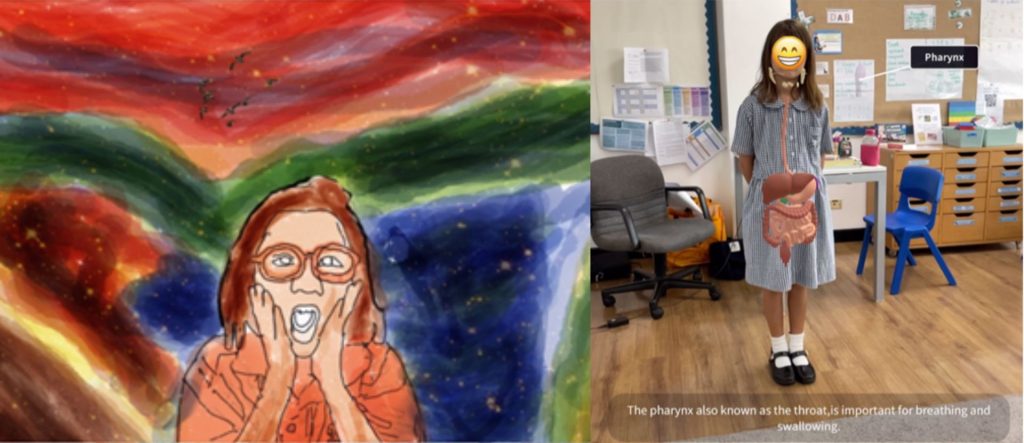
Staff Investment
Switching to such a model involved substantial investment in staff training and support. All of our teaching staff are working towards their Apple badges, with the majority now certified as Apple teachers and myself as an Apple Distinguished Educator. Staff are trained in the application of the SAMR model, developed by Dr. Ruben Puentedura, a four-level taxonomy which describes how technology impacts teaching and learning. At Harrow Bangkok we always aspire to work at the ‘Informating’ levels of the model since this is where true transformational learning occurs.
In addition to staff training, I attend weekly year group planning meetings from Early Years through to Year 5, where we discuss ideas for technology integration. For example, Year 5 were recently researching inspirational leaders and planning to make a timeline. Rather than using traditional cutting and sticking methods, the pupils instead created timelines in Apple’s ‘Keynote’ and projected these in augmented reality via the app ‘AR Makr’. To teach students and staff these skills, we booked a large auditorium where I could provide a demonstration session. I also created ‘How to…’ guides and made myself available to be booked for the first unit of study lesson, should any staff require additional support. A highlight of this project was a parent expo where the students physically walked their family members through the timelines, whilst providing a narrative. It was such an effective way to embed their understanding of chronology and the passing of time. This project was so successful that it has been used for other units of study such as the Ancient Greeks and Space Exploration.
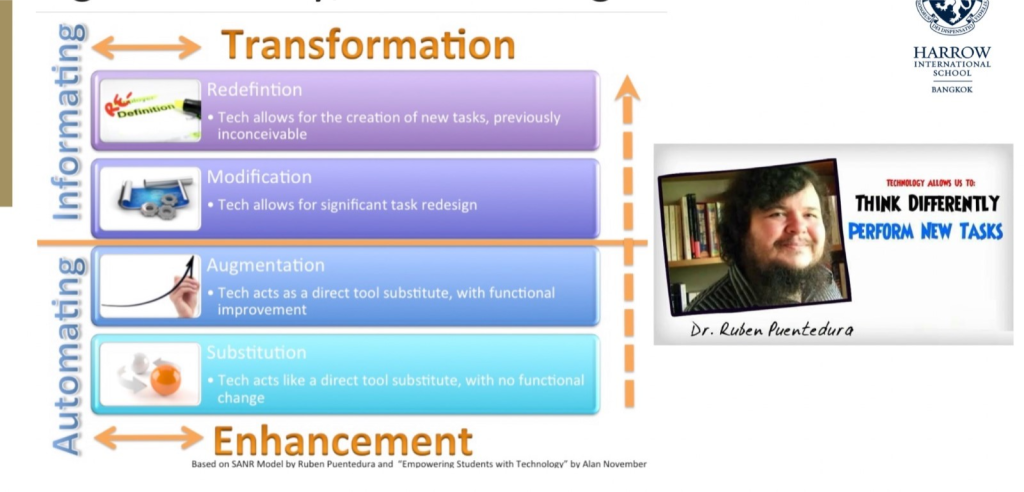
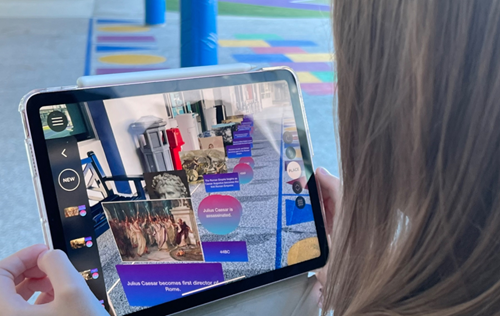
Discrete versus integrated approaches
We are now two years into the project and have found that the highest standards are attained when the computer science elements of the curriculum continue to be led by a specialist but are planned, co-taught and assessed in collaboration with the form-room teachers. In the past, the weekly Computing lessons were used to release teachers for their own planning and preparation purposes but now they are used as an opportunity for both teachers and TAs to gain valuable CPD. This has led to many staff commenting upon the applicability of computer science across other curriculum areas. For example, one colleague told me that they will never teach angles in the same way again after witnessing how quickly students gain understanding of this concept when learning via robots and sprites.
In terms of the remaining digital literacy strands, it has been a privilege to watch staff confidence and enthusiasm soar as they continue to take risks to apply new technological tools and techniques to the different curriculum areas. The impact of this has been clear from lesson observations, work scrutinies and feedback which consistently indicates that pupils are highly proficient when utilising technology. Student creativity is at an all-time high and we are witnessing improved outcomes across all areas since implementing the changes.
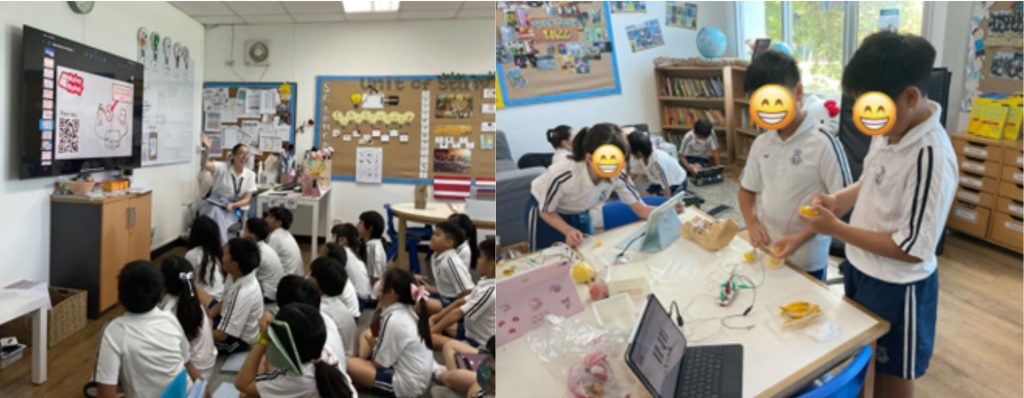
Recommendations
If you are thinking of moving towards a model of greater technology integration in your own setting, there are a number of core elements which have been instrumental to the project’s success: SLT support; a clear vision; robust subject leadership; good resourcing (1:1 devices have been key); a technology advocate in each year group; protected time for regular training; a safe and supportive environment to try out new techniques; and staff buy-in (which comes once all the previous elements are in place). It’s also a good idea to appoint student leaders, who can also support the community with tech integration, and themselves become catalysts for change.
Final note
As educators, it is our duty to equip students with the skills and attributes required for the 21st century workplace in which the effective application of digital technologies will be paramount. It would have been easy to have continued with the discrete model at Harrow Bangkok, rolling out the same tried and tested curriculum week after week. But, in the words of John Dewey, written over a century ago, “If we teach today, as we taught yesterday, we rob our children of tomorrow.”
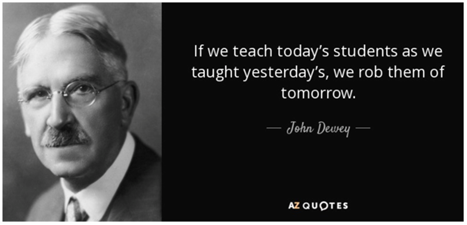
Ready to innovate? Discover a range of tools, resources, and expert solutions to support your digital education journey on AISL Mall.
References:
- https://www.gov.uk/government/publications/national-curriculum-in-england-computing-programmes-of-study/national-curriculum-in-england-computing-programmes-of-study
- https://www.computingatschool.org.uk/resources/2014/september/computing-in-the-national-curriculum-a-guide-for-primary-teachers
- http://hippasus.com/rrpweblog/archives/2015/10/SAMR_ABriefIntro.pdf
